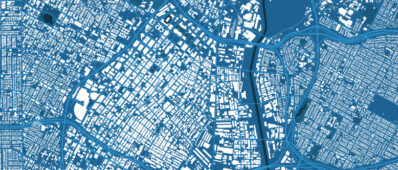Abstract
A universal freeway incident detection framework is a task that remains unfulfilled despite the promising approaches that have been recently explored. The need for an operationally successful incident detection and management system as a vital component of any advanced traffic management system, is well established and recognized. Only recently however, researchers and practitioners have begun to increasingly realize that for an incident detection framework to be universally operational and successful, it needs to fulfill all components of a set of recognized needs. It is the objective of this research to define those universality requirements and produce an incident detection framework that possesses the potential to fulfill them.
A new potentially universal freeway incident detection framework has been proposed, developed and evaluated. The research effort was started by defining a comprehensive set of requirements that any universal incident detection algorithm or framework should fulfill. Among these requirements, an incident detection algorithm needs to be operationally accurate, automatically transferable, and capable of automatically adapting to changes in the freeway environment. This set of universality requirements was used as a template against which all algorithms within the scope of this study have been evaluated. Three major incident and loop detector databases were heavily utilized, two of which are unprecedented real databases collected from two major freeway sites in California and Minnesota, namely the Alameda County’s I-880 freeway database and the Minneapolis’ I-35W database. The universality of the most well known existing incident detection algorithms was tested using the above databases. Serious lack of the universality, particularly transferability, was detected in all existing algorithms. Prior to the development of the new universal framework, limits on acceptable performance were elicited from TMC surveys conducted as part of this effort. Preliminary investigation of two promising advanced neural networks, namely the LOGICON and the PNN, was conducted. The PNN was more appealing due to its universality potential. The PNN was modified using a principal components transformation layer that resulted in performance enhancements. This together with its potential universality, led to the choice of the modified PNN for in-depth development. The in-depth development stage was divided into three phases. The first was the extraction of a new and improved input feature set that produced more distinct classes in the input feature space. The new features enhanced the transferability of the PNN and made the framework more compliant with the universality requirements. The second phase was the on-site real time retraining of the PNN after transferability, a phase that produced near optimal classification results and detection performance. The third phase was the development of a post processor output interpreter that linked the isolated 30 second outputs of the PNN and produced a sequentially updated probabilistic measure of existence of an incident in the field. The overall PNN-based framework was found to be fully compliant with the entire set of universality requirements. Finally, a new approach for training a multi-smoothing-parameter version of the PNN was investigated. The approach utilized genetic algorithms for optimizing the selection of the smoothing parameters. Obtained results indicated an improvement in performance over the single smoothing parameter PNN but at the expense of longer training time.
The superiority and universality of a particular advanced neural network model, namely the PNN, was concluded in this research, as compared to the Logicon and the MLF neural networks, as well as existing conventional freeway incident detection algorithms. Adding the principal components transformation layer to the PNN was found to enhance its performance. Although the genetically optimized version of the PNN showed better transferability, both versions showed equally good performance after retraining. The PNN was concluded to be more practical for TMC implementation due to its instantaneous training capabilities.



